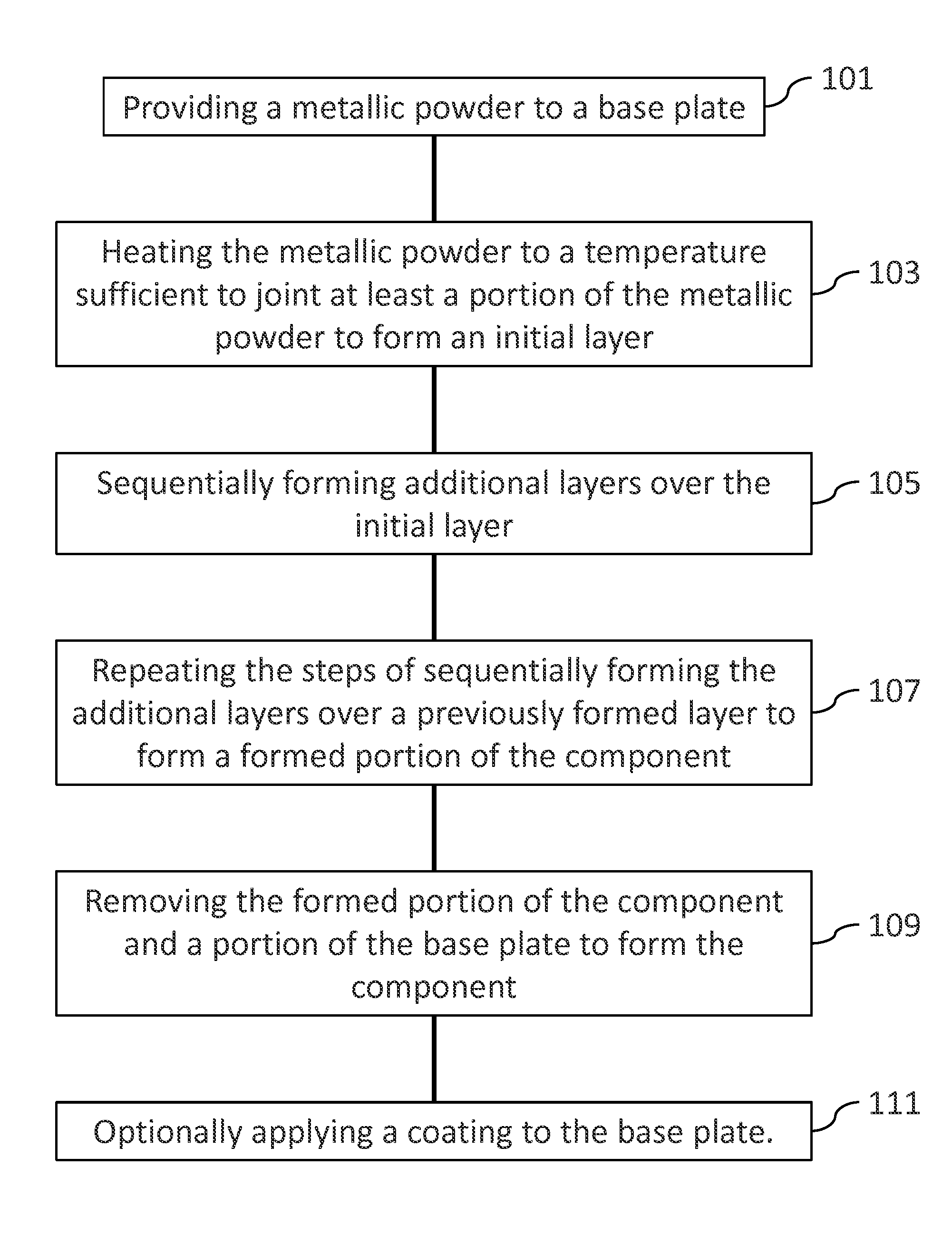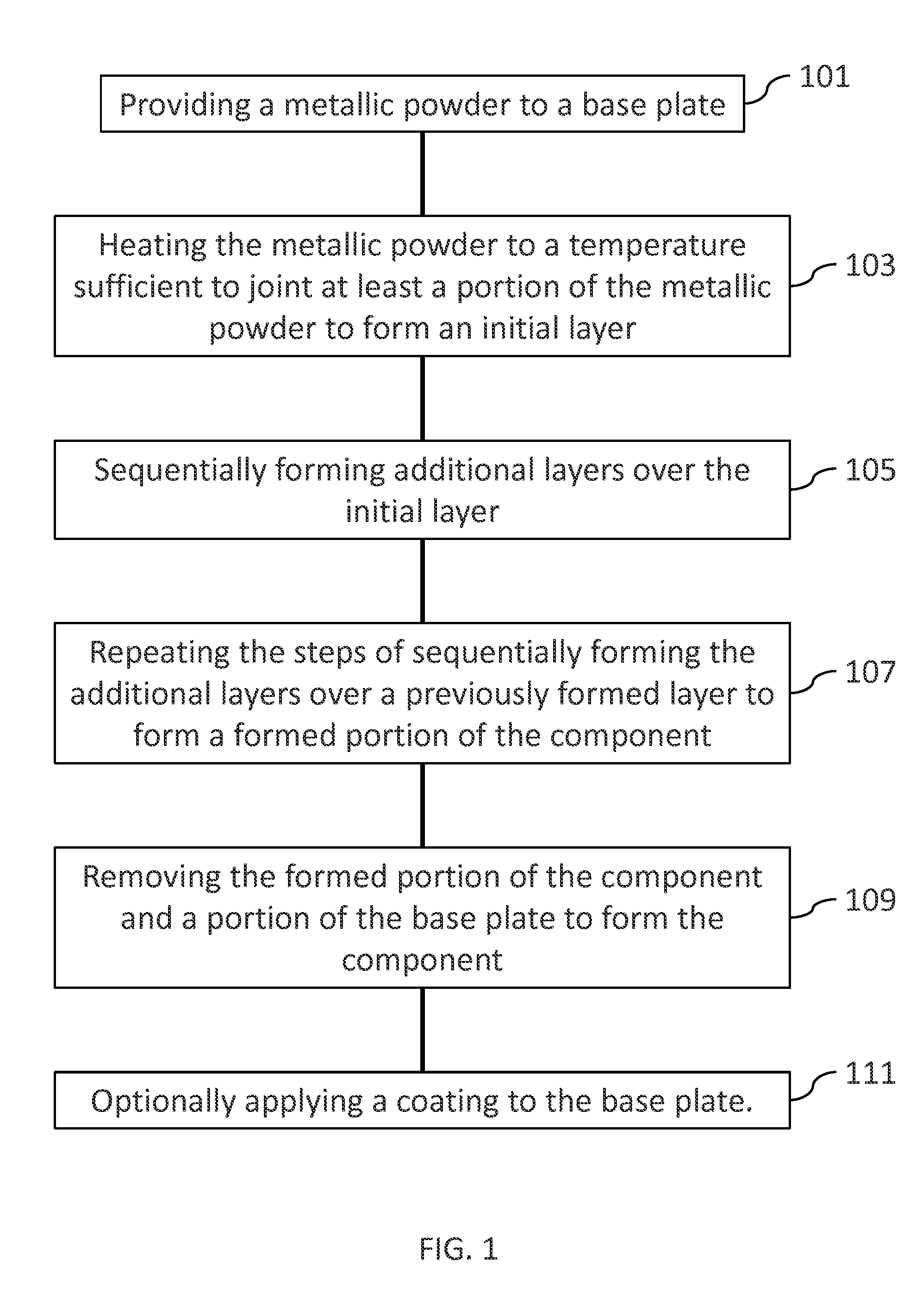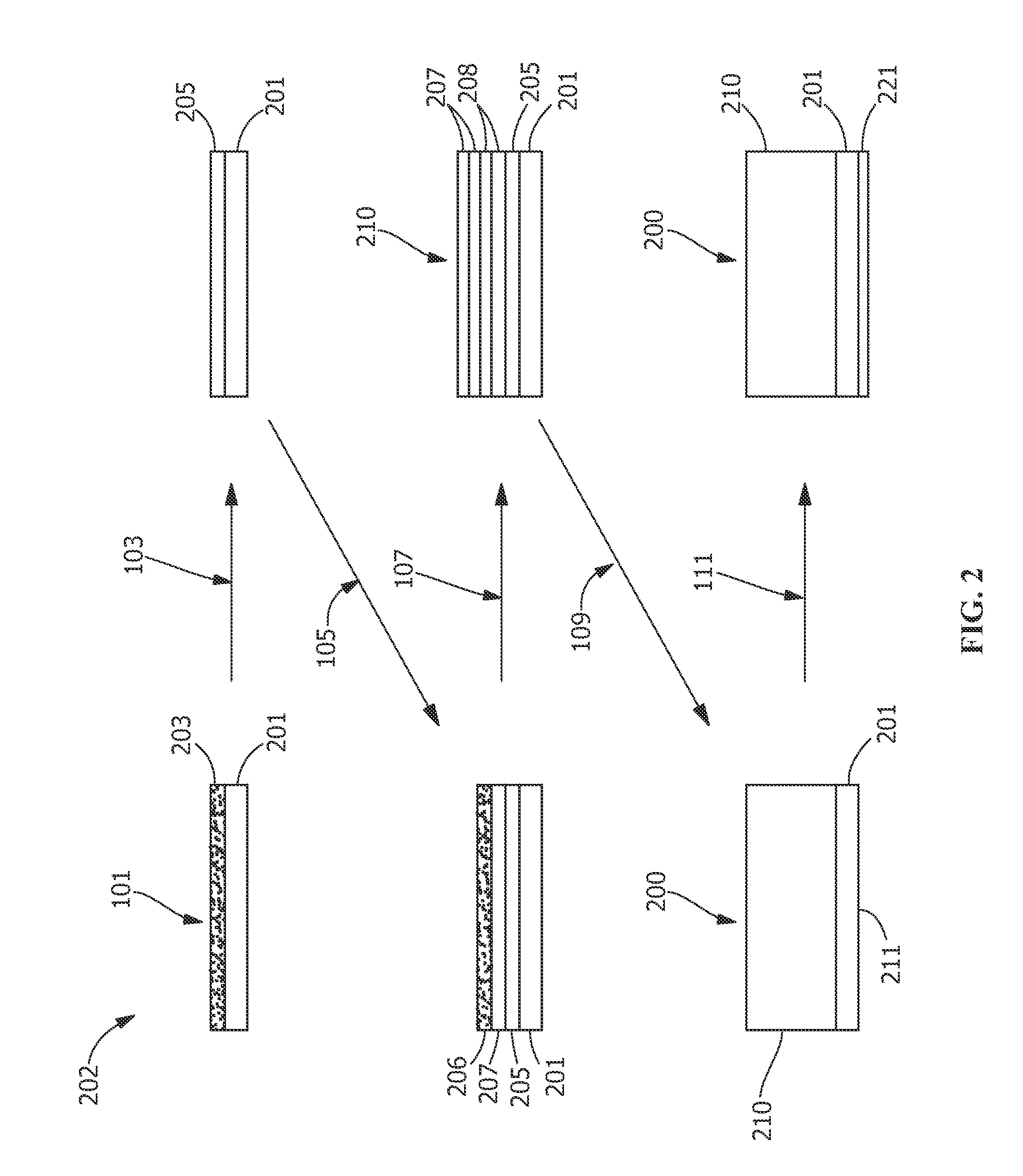Component and method for fabricating a component
a technology of components and manufacturing methods, applied in the direction of burner details, machines/engines, continuous combustion chambers, etc., can solve the problems of limited ability to take advantage of 3d printing capabilities to cool high temperature materials, limited material 3d printing is currently limited, etc., and achieves the effect of high temperature resistance surfa
- Summary
- Abstract
- Description
- Claims
- Application Information
AI Technical Summary
Benefits of technology
Problems solved by technology
Method used
Image
Examples
Embodiment Construction
[0014]Provided are a component having a high temperature resistant surface and a method for fabricating a component having a high temperature resistant surface. Embodiments of the present disclosure, in comparison to components and methods not using one or more of the features disclosed herein, provide additive manufacturing components including high temperature materials, increase temperature resistance, decrease fabrication costs, decrease material waste, increase fabrication efficiency, provide attachment of 3D manufactured portions to high temperature resistant materials, or a combination thereof.
[0015]Referring to FIGS. 1-2, in one embodiment, a method 100 for fabricating a component 200 includes an additive method. Additive methods include any manufacturing method for making and / or forming net or near-net shape structures. As used herein, the phrase “near-net” refers to a structure, such as the component 200, being formed with a geometry and size very similar to the final geom...
PUM
| Property | Measurement | Unit |
|---|---|---|
| Temperature | aaaaa | aaaaa |
| Composition | aaaaa | aaaaa |
| Electrical resistance | aaaaa | aaaaa |
Abstract
Description
Claims
Application Information
 Login to View More
Login to View More - R&D
- Intellectual Property
- Life Sciences
- Materials
- Tech Scout
- Unparalleled Data Quality
- Higher Quality Content
- 60% Fewer Hallucinations
Browse by: Latest US Patents, China's latest patents, Technical Efficacy Thesaurus, Application Domain, Technology Topic, Popular Technical Reports.
© 2025 PatSnap. All rights reserved.Legal|Privacy policy|Modern Slavery Act Transparency Statement|Sitemap|About US| Contact US: help@patsnap.com



